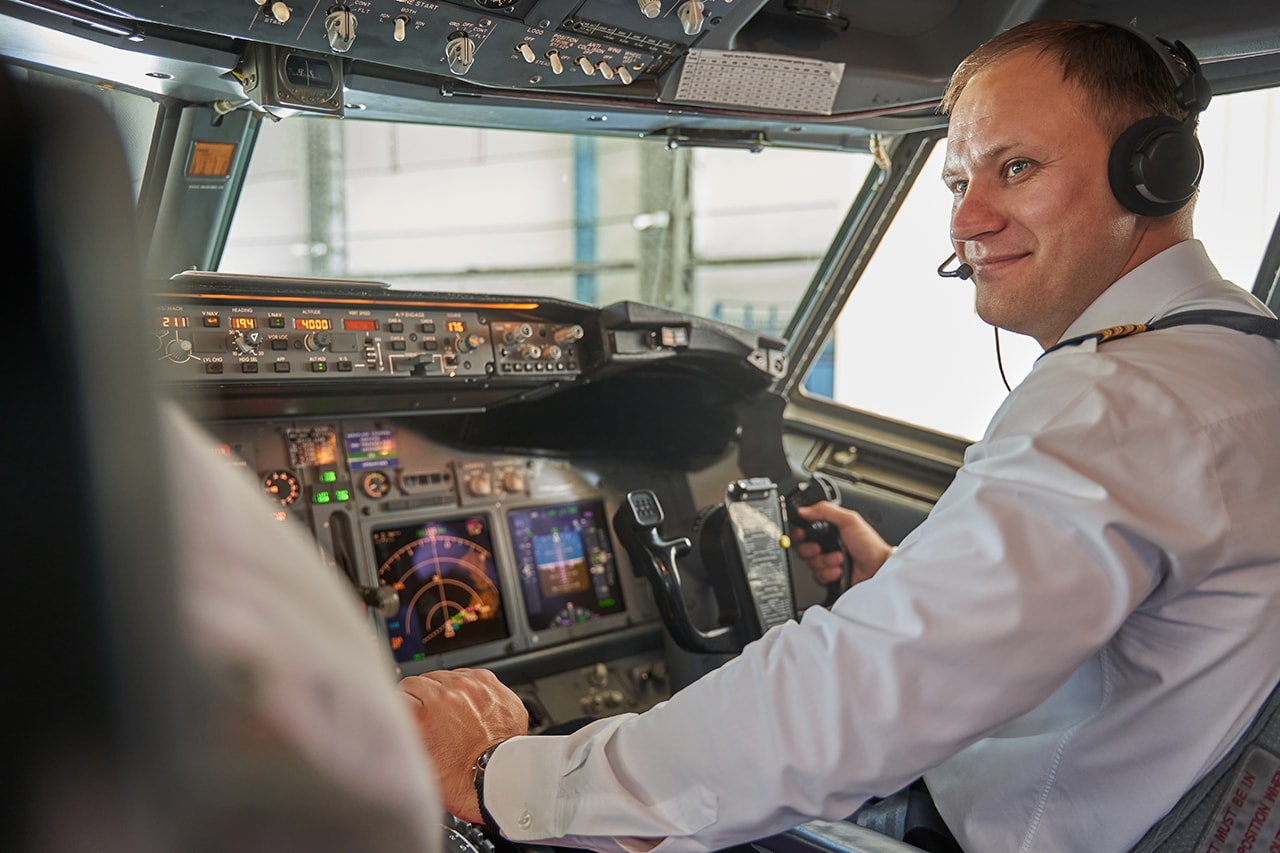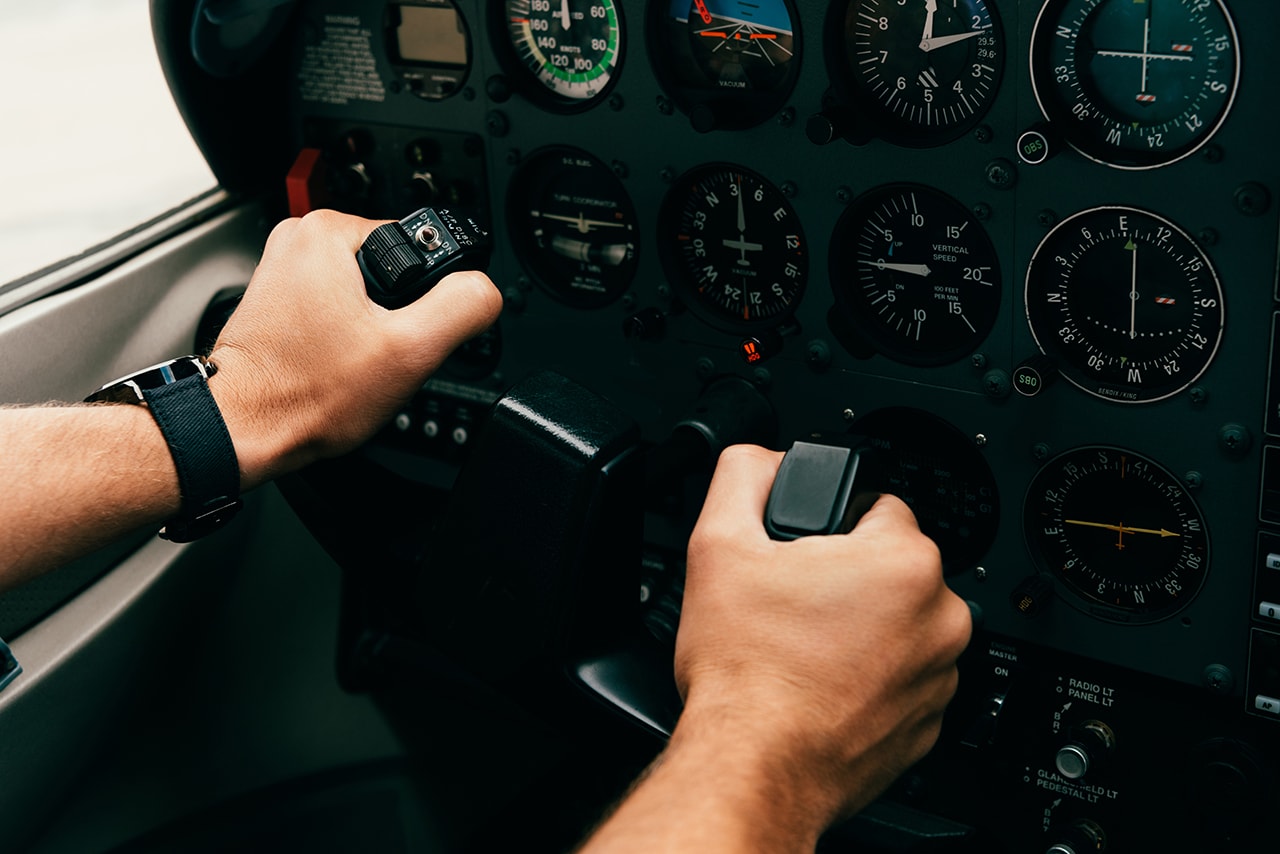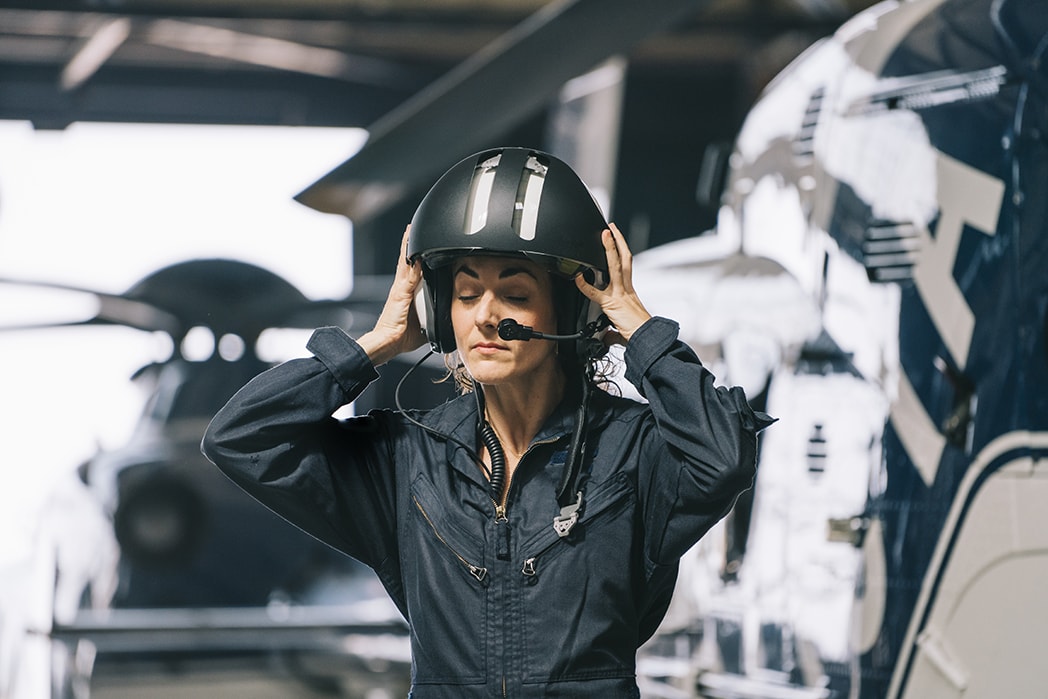FAR Part 141: A Complete Guide to Pilot School Regulations
Aug 21, 2025
FAR Part 141 regulates pilot schools to ensure standardized and quality flight training. This is a summary of FAR Part 141, the certification process and the benefits of attending a Part 141 school.
Key Takeaways
-
FAR Part 141 sets the rules for pilot schools to ensure safety and quality in flight training programs.
-
The Part 141 school certification process has 5 phases and ends with an Air Agency Certificate that proves compliance with FAA regulations.
-
Students at Part 141 schools get a structured curriculum, lower flight hour requirements for certification and career opportunities through airline partnerships.
Understanding FAR Part 141
FAR Part 141 sets the rules for pilot schools so there is standardized flight training and aviation regulations. This is key to consistency and safety in the industry. To be a certified pilot school under FAR Part 141 you must:
-
Have either a pilot school certificate or a provisional pilot school certificate.
-
Use those certificates to advertise and teach approved pilot training courses.
-
Endorse their training programs.
For those new to flight training, understanding what is part 61 in aviation is also important, as Part 61 regulations offer a more flexible and individualized approach compared to the structured standards of Part 141.
Having a pilot school certificate has many benefits:
-
Schools can train pilots while their programs meet FAA standards.
-
It’s a badge of quality.
-
It attracts students who want structured and reliable training.
FAR Part 141 brings standardization to the training environment so we can produce skilled and knowledgeable pilots who meet the needs of the industry.
Certification Process for Part 141 Pilot Schools
The Part 141 school certification process is rigorous and step by step:
-
Pre-application
-
Application
-
Document compliance
-
Demonstration and inspection
-
Certification
Each step ensures the applicant meets the FAA requirements. If successful, the school gets an Air Agency Certificate to offer approved flight training programs.
Getting this certification is a big deal for any school. It means the school is compliant with all FAA regulations and can deliver quality flight training.
The certification proves the school is operationally ready and its training programs are thorough and effective.
Here are the steps below to help you become a Part 141 pilot school.
Pre-Application Phase
The pre-application phase is the first step in the process. You must:
-
Submit a Letter of Intent to the FAA
-
Meet the prerequisites (e.g. have a provisional pilot school certificate)
-
Show compliance with FAA regulations
Pilot schools must:
-
Have specified facilities
-
Have continuous use of designated airports for training flights
-
Have certified flight instructors and ground instructors
-
Have a chief instructor for each training course
-
Optionally, schools may also appoint an assistant chief flight instructor to help maintain instructional quality and provide oversight support.
You must meet these requirements to move forward in the certificated process.
You must have a permanent business location and business telephone number if you offer online training. The pre-application phase ensures you meet all initial certification requirements before you apply.
Formal Application Phase
The formal application is the final step in the FAR Part 141 certification process. Here are the key elements:
-
Submitting the FAA Form 8420-8 to officially start the process.
-
Review of the school’s documents to make sure everything is complete and accurate.
-
The FAA’s multi-step process which includes facility inspections and final certification to verify the school meets all the regulations.
Understanding the documentation and certification process is crucial for pilot schools seeking FAA approval. This phase makes sure the applicant knows what’s required and is ready for all the FAA standards.
Getting through the formal application phase is a big deal and gets the school closer to getting their Air Agency Certificate.
Demonstration and Inspection Phase
During the demonstration and inspection phase the FAA inspects the pilot school to verify they have the facilities, equipment and personnel. This phase ensures the school is ready to provide high quality flight training.
The FAA’s inspection includes a thorough examination of the school’s training facilities, flight training devices and personnel qualifications.
The FAA also checks the school’s ability to conduct training flights and stage checks. This is critical for the school’s final certification.
Passing the demonstration and inspection phase shows the school is ready to provide structured and compliant flight training under Part 141.
Curriculum Requirements for Part 141 Training Programs

Part 141 pilot schools must:
-
Have an FAA approved curriculum
-
Use dedicated training facilities
-
Follow a specific syllabus approved by the FAA covering all areas of knowledge and skill development
This structured program ensures all students get comprehensive and standardized instruction. This is what sets Part 141 programs apart from less regulated alternatives, a consistent and reliable training environment.
The curriculum includes minimum ground and flight time for each course as outlined in the training course outline.
For example an airplane category rating requires at least 35 hours of aeronautical knowledge as outlined in the aeronautical information manual.
Part 141 programs also offer specialized courses such as pilot refresher, flight instructor refresher, ground instructor refresher and test pilot training. These programs ensure students get targeted training for their specific needs and career goals.
Training aids and facilities in Part 141 programs must be validated, qualified and approved by the FAA. This includes flight training devices and simulators which play a big role in providing realistic training scenarios.
The structured syllabus and rigorous curriculum ensures Part 141 pilot schools deliver high quality training and get students ready for a career in aviation.
FAA Oversight and Standards for Part 141 Schools

FAA oversight is key to Part 141 pilot schools. These schools are inspected regularly to ensure compliance with FAA regulations and standards.
The FAA does compliance checks, including facility, equipment and personnel inspections to verify compliance with the standards. This oversight ensures students get safe and effective flight training.
In rare cases involving incidents or safety concerns, investigations may also involve the National Transportation Safety Board, which plays a critical role in analyzing causes and improving safety across all modes of transportation, including aviation.
Part 141 pilot schools must have a structured training program and syllabus as required by FAA regulations. This ensures all training programs are comprehensive and standardized.
Upon certification Part 141 pilot schools get an Air Agency Certificate and standardized letters outlining operational requirements. This is proof of the school’s commitment to provide high quality flight training and to follow FAA standards.
FAA inspections and compliance checks keep Part 141 pilot schools in line. These checks ensure students get training that meets the highest standards of safety and effectiveness to prepare them for a career in aviation as required by the federal aviation administration.
Comparison Between Part 61 and Part 141 Training Programs
FAR Part 141 outlines the structured training requirements for pilot schools, differentiating them from the more relaxed Part 61 programs. Part 141 programs require students to pass stage checks throughout their training and meet specific performance standards before advancing.
Part 61 has more flexibility in scheduling and allows students to customize their training to their own needs.
For those interested, it’s important to understand the part 61 commercial pilot requirements to fully grasp how the training differs in terms of flight hours and curriculum.
One of the main differences between Part 61 and Part 141 programs is the minimum flight hour requirements.
Part 141 schools have lower flight hour minimums for a private pilot certificate (35 hours) compared to Part 61 (40 hours).
And for a commercial pilot license Part 141 has lower hours (190 hours) compared to Part 61 (250 hours) so students in Part 141 programs train faster and cheaper.
Many airlines prefer to hire pilots who have gone through structured training in Part 141 programs because of the rigorous curriculum and standardized training.
The structured nature of Part 141 programs ensures students get comprehensive and consistent training preparing them for the demands of a professional flying career.
Knowing these differences helps students choose the right training program for themselves.
Benefits of Choosing a Part 141 Pilot School

Choosing a Part 141 pilot school means:
-
A structured curriculum to cover all the skills and knowledge you need to be a pilot.
-
A structured approach to develop the competencies for a career in aviation.
-
Lower flight hour requirements for certification = lower training costs.
Part 141 pilot schools often tie their programs in with college aviation degree programs so you can get a degree while you get your flight training. This adds to your qualifications and opens up more career opportunities.
The structured environment of a Part 141 school means you get top notch instruction and are well prepared for the demands of professional flying, including earning a commercial pilot certificate and eventually earning an airline transport pilot certificate.
The cost structure of Part 141 programs may be different than other training programs with fewer flight hours on paper.
But actual costs will vary depending on your specific training needs and additional certifications. Overall the benefits of choosing a Part 141 pilot school are comprehensive training, potential cost savings and tie in with higher education programs.
Ground Training and Flight Training Devices
Ground training is a big part of Part 141 programs, it’s the theoretical knowledge required to fly safely. This includes aviation regulations, navigation, meteorology and aircraft systems.
Structured ground school ensures students meet the knowledge standards before moving on to flight training, so they have a solid foundation to become competent and confident pilots.
Flight training devices play a big part in Part 141 programs, they provide realistic scenarios for students to practice and improve their skills.
These devices, including aviation training devices, allow students to experience different flight conditions and emergency situations in a controlled environment.
Part 141 pilot schools often integrate advanced flight training devices into their curriculum to meet FAA requirements, including flight instructor instrument training.
Using simulators in ground training has many benefits, you can practice procedures without the risks of actual flight. Simulators are a safe and effective way for students to develop their skills and build confidence before getting in the air.
The combination of structured ground training and advanced flight training devices means Part 141 pilot schools deliver comprehensive and high quality training.
Importance of End-of-Course Tests and Stage Checks
End-of-course tests and stage checks are part of the Part 141 training process. Stage checks are for:
-
Student progression
-
Instructional quality within Part 141 courses
-
Student performance
-
Instructional methods
-
Legal protection to ensure students are competent before solo flight.
Feedback from stage checks can help improve individual pilot training and the flight school experience. These checks ensure students meet the standards at each stage of training and provide a structured and reliable path to pilot certification.
Can’t stress enough how important end-of-course tests and stage checks are, they are crucial to the Part 141 training programs and practical test requirements.
Special Preparation Courses and Additional Ratings
Part 141 schools offer special courses and additional ratings to add to a pilot’s credentials. To take a special course, a student must have a pilot, flight instructor or ground instructor certificate.
These courses are ground and flight training to develop competency and proficiency in a specific area. Full flight simulators and training devices can be used in these courses if they are representative of the approved aircraft and taught by a certified instructor.
One of the most popular additional ratings is the instrument rating which requires both ground and flight training.
This rating allows pilots to fly in any weather, and opens up more career opportunities. Students can also add an aircraft category or class rating if they have the appropriate pilot certificate for the additional aircraft type rating.
Part 141 programs provide a structured way to get these additional ratings, so students get training tailored to their needs.
Whether you want to add to your existing skills or expand your credentials, special courses and additional ratings from Part 141 schools can help you achieve your aviation dreams.
Maintaining Compliance with Part 141 Regulations
Maintaining compliance with Part 141 regulations is essential for the continued operation of pilot schools. Schools must notify the FAA of significant changes to their operating structure, such as changes in ownership or key personnel.
This ensures that the FAA is aware of any modifications that could impact the school’s ability to provide quality training.
Part 141 pilot schools are subject to periodic reviews to ensure adherence to safety and training standards. These reviews include inspections of facilities, equipment, and personnel, as well as an examination of training records and documentation.
Proper record-keeping is crucial for demonstrating compliance during FAA inspections. Schools must maintain accurate and up-to-date records of student progress, instructor qualifications, and training activities.
Not complying with federal aviation regulations and federal regulations can get your school’s certificate suspended or revoked.
To avoid that, schools must make sure they meet all FAA requirements and monitor their compliance status. By following Part 141 strictly, pilot schools can provide good training and ensure their students’ safety and success.
Summary
In short, FAR Part 141 provides a framework for pilot schools to follow so that training is standardized and high quality. The certification process, curriculum, FAA oversight and compliance all contribute to the integrity and effectiveness of Part 141 programs.
Part 141 vs Part 61 training shows the benefits of a structured approach, lower flight hours and a tougher curriculum.
Choosing a Part 141 pilot school has many advantages, from comprehensive training and potential cost savings to integration with college programs.
Advanced flight training devices, financial aid and scholarships and clear career paths are just a few more reasons to choose Part 141. By understanding and following these rules, you can have a successful and fun aviation career.
Going to a Part 141 pilot school is an exciting and rewarding adventure.
The structured training, comprehensive curriculum and strong support network of Part 141 programs will have you ready for the demands of the aviation industry. So take to the skies and achieve your dream of becoming a professional pilot.
